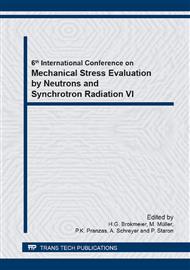p.123
p.129
p.135
p.143
p.149
p.155
p.161
p.167
p.173
Laser Surface Hardening of Steel: Effect of Process Atmosphere on the Microstructure and Residual Stresses
Abstract:
The effect of processing atmosphere on the microstructure and residual stresses are studied for laser surface hardening on steel samples of grade AISI 4140. Samples were hardened in air, vacuum and inert gas atmosphere (Helium) by means of a stationary laser beam. A high-power diode laser (HPDL) system was used in combination with a custom-designed process chamber. Residual stress distributions in lateral and in depth direction were analysed after laser processing by means of X-ray diffraction according to the well known sin² - method. X-ray residual stress analyses were supplemented by microscopic investigations of the local microstructure. The results indicate a widening of the compressive stressed region in lateral as well as in depth direction by surface hardening in inert gas atmosphere compared to laser surface hardening in air or vacuum atmosphere. This is due to the local heating flux distribution during the laser assisted heat treatment which is strongly affected by the processing atmosphere an leads to an extension of the hardening zone when using helium as inert gas.
Info:
Periodical:
Pages:
149-153
Citation:
Online since:
November 2013
Authors:
Price:
Сopyright:
© 2014 Trans Tech Publications Ltd. All Rights Reserved
Share:
Citation:


